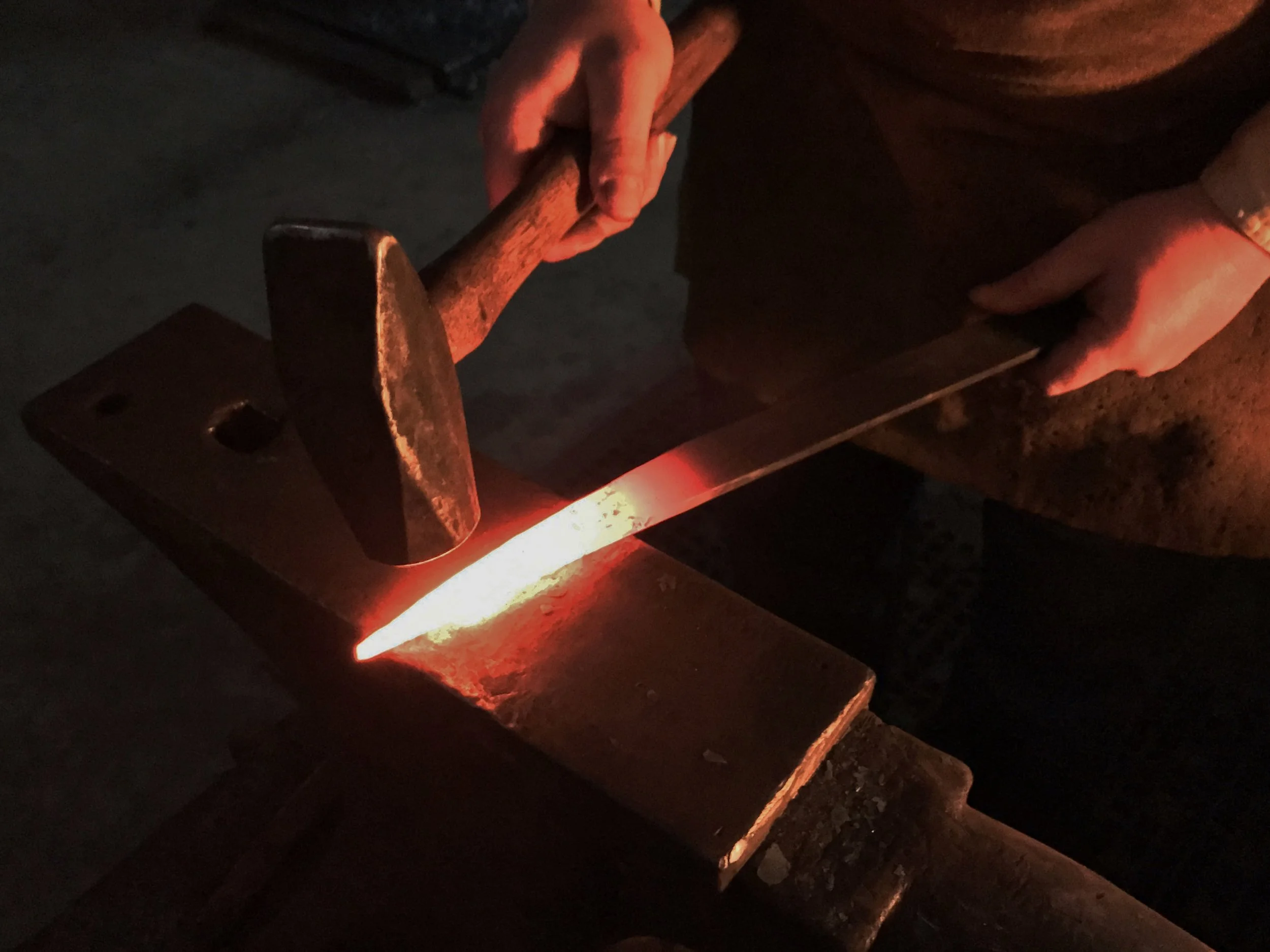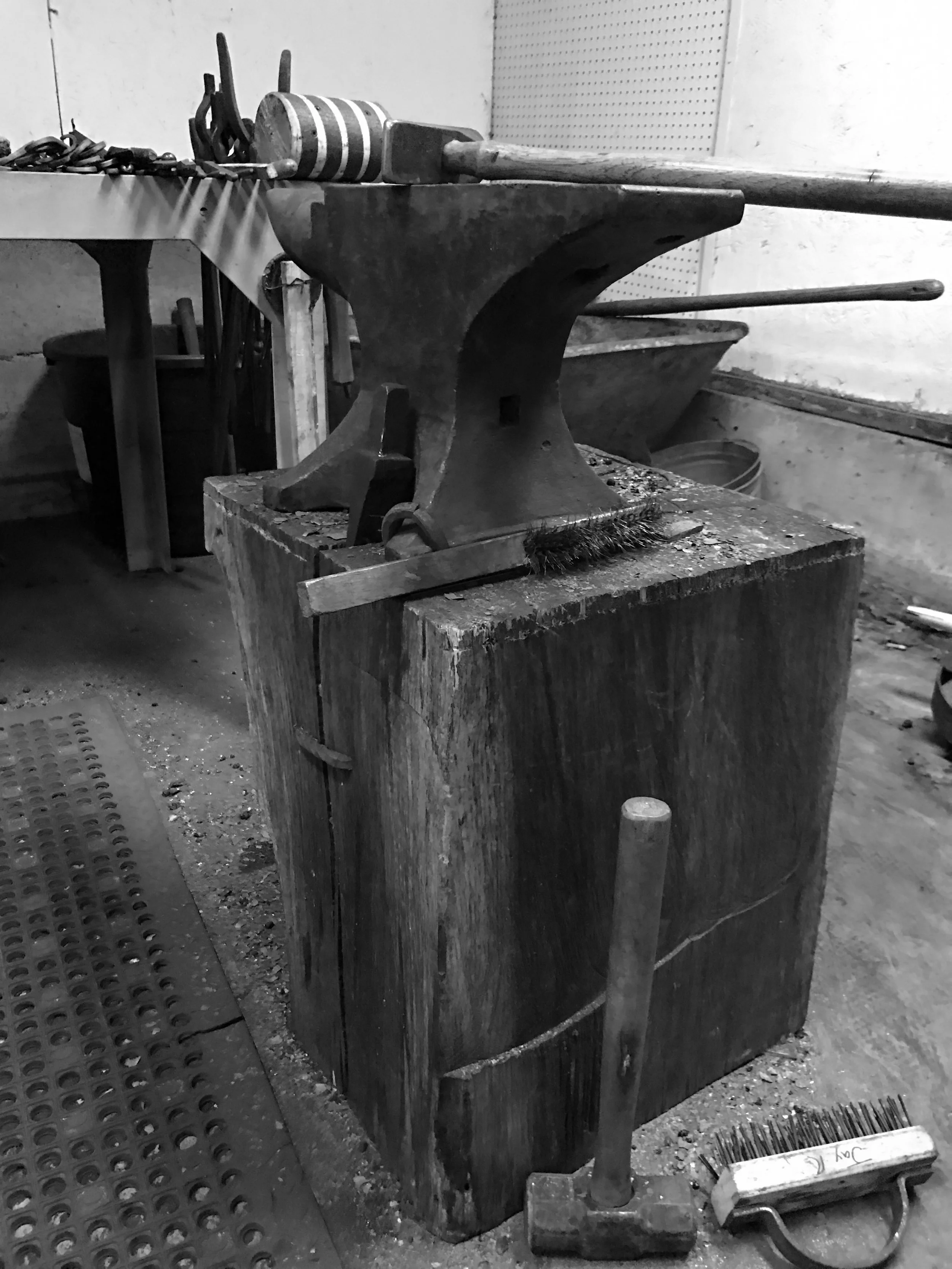
Hello, my name is Jay Replogle. Replogle Armory is a blacksmith forge based in Middle Tennessee that specializes in custom and specialty weaponry. Take a look around and make yourself at home.
GET A QUOTE
If you are interested in a specific blade, custom piece, or original design, contact me for more details.


My Process
“
Forging
Every blade at Replogle Armory is hand forged by Jay Replogle. Using modern steels and ancient techniques, a wide array of blades and tools are crafted. The forge used the majority of the time is a traditional coal forge. It heats the steel in such a way that modern gas forges cannot compare. The process begins with basic bar stock of the correct size and carbon content. With hammer, fire, and sweat the blade is brought forth from the void. Forging it to shape with hammer and anvil just like my ancestors did countless ages ago.
Shaping and heat treating
The normalized black, rough forged blade is then taken to the grinder. The black scale is peeled away to reveal the glimmering white steel beneath. This is where the blade takes its true form. The blade is shaped and profiled to standard and suitability of the blacksmith. Once satisfied with the profile, overall shape, and lines it's on to heat treating. The most important process of bladesmithing is the heat treat. It is where a blade is born. This is what gives a blade its hardened edge and flex. If done incorrectly the edge could fold or the blade could shatter. The steel is brought to critical temperature and quenched in oil. After treatment, depending on the application, it is reheated to a lower temperature to soften the steel. This tempering is what gives the blade its flex and toughness.
FInishing the blade
After the blade is heat treated, it is taken back to the grinder to remove black scale from the quench. Then it is hand sanded to achieve the appropriate amount of shine. After sanding, handle and guard material are chosen. These materials are profiled, filed, and sanded to fit neatly on the tang. The parts are epoxied and pinned to the tang of the blade. The handle and guard are sanded and polished to the desired sheen. Once the knife is complete, it is on to the sheath or scabbard. Most are made from hand-cut and hand-stitched leather. Other pieces are occasionally carved from wood and coated in linen, leather, or both.




